AnyDB Concepts
What is AnyDB?
AnyDB is a unified and flexible data store designed to help businesses store, manage, and connect business data. Whether you're tracking customer records, processing invoices, managing HR data, or overseeing complex workflows, AnyDB gives you the flexibility without the complexity of traditional databases or expensive IT solutions .
It provides a simple interface that makes it easy to structure and visualize business data, while also offering powerful features such as automation, security, compliance, reporting, AI-driven insights, and integrations with other tools.
By leveraging templates, relationships, and an intuitive grid interface, your team can collaborate efficiently, automate processes, and scale operations effortlessly.
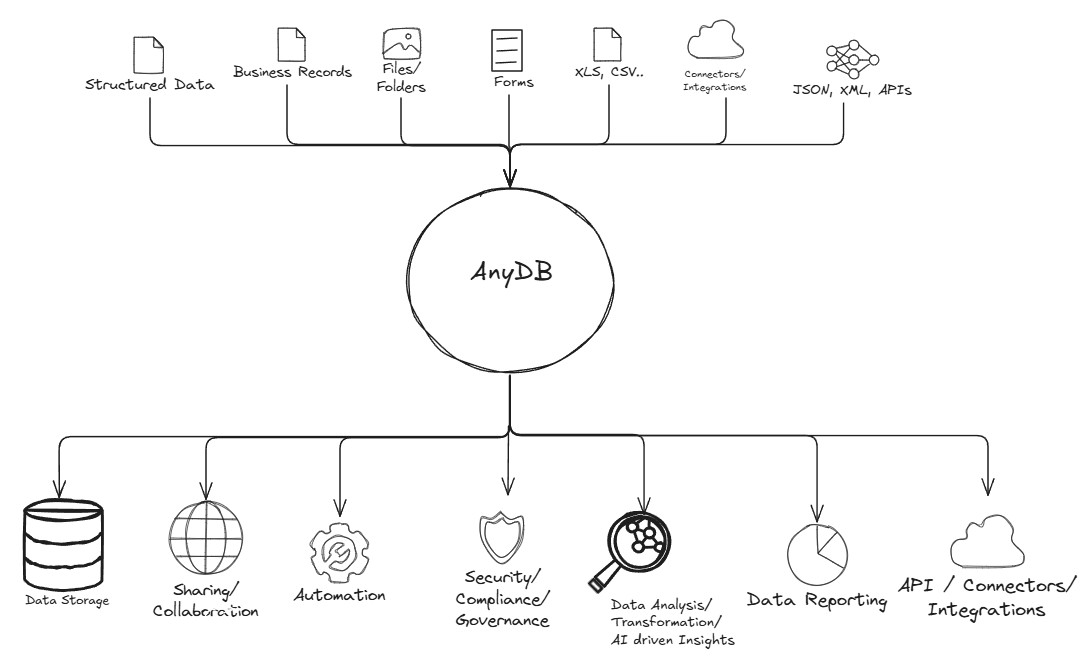
Business Operations in AnyDB
AnyDB allows your team to store, manage, share, collaborate and drive meaningful insights on your business. This allows you to run your business more efficiently and scale your operations.
With AnyDB, your teams across HR, IT, Sales, Marketing, and beyond can centralize their business data, making it more accessible, secure, and actionable.
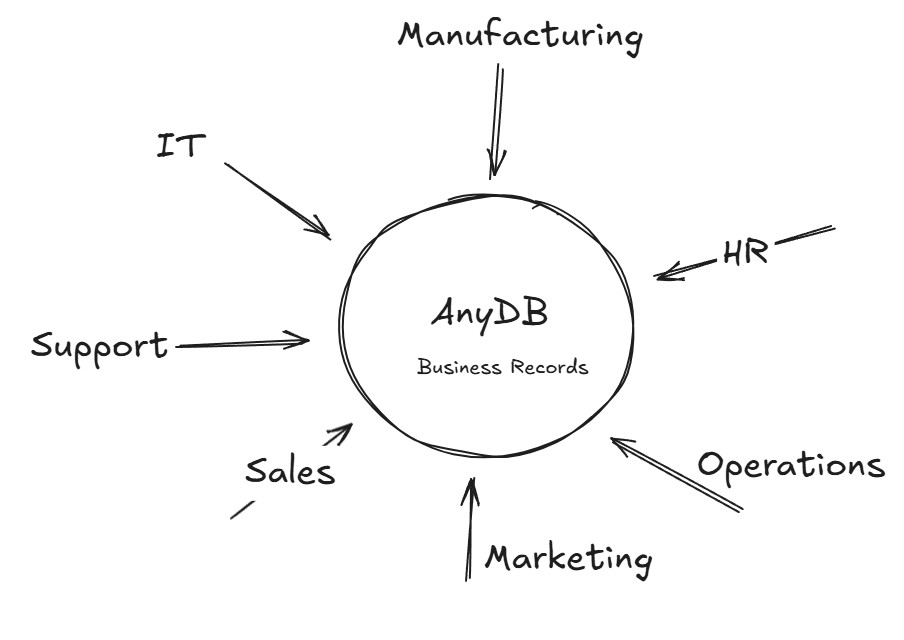
Business Records in AnyDB
What are Business Records?
A business record is any document or structured data that captures business activities as part of regular operations. These records provide essential information about transactions, customers, employees, and other key business functions.
Examples of business records:
- Customer records
- Sales transactions
- Invoices
- Accounting data
- Tax filings
- Employee records
- Manufacturing quality checks
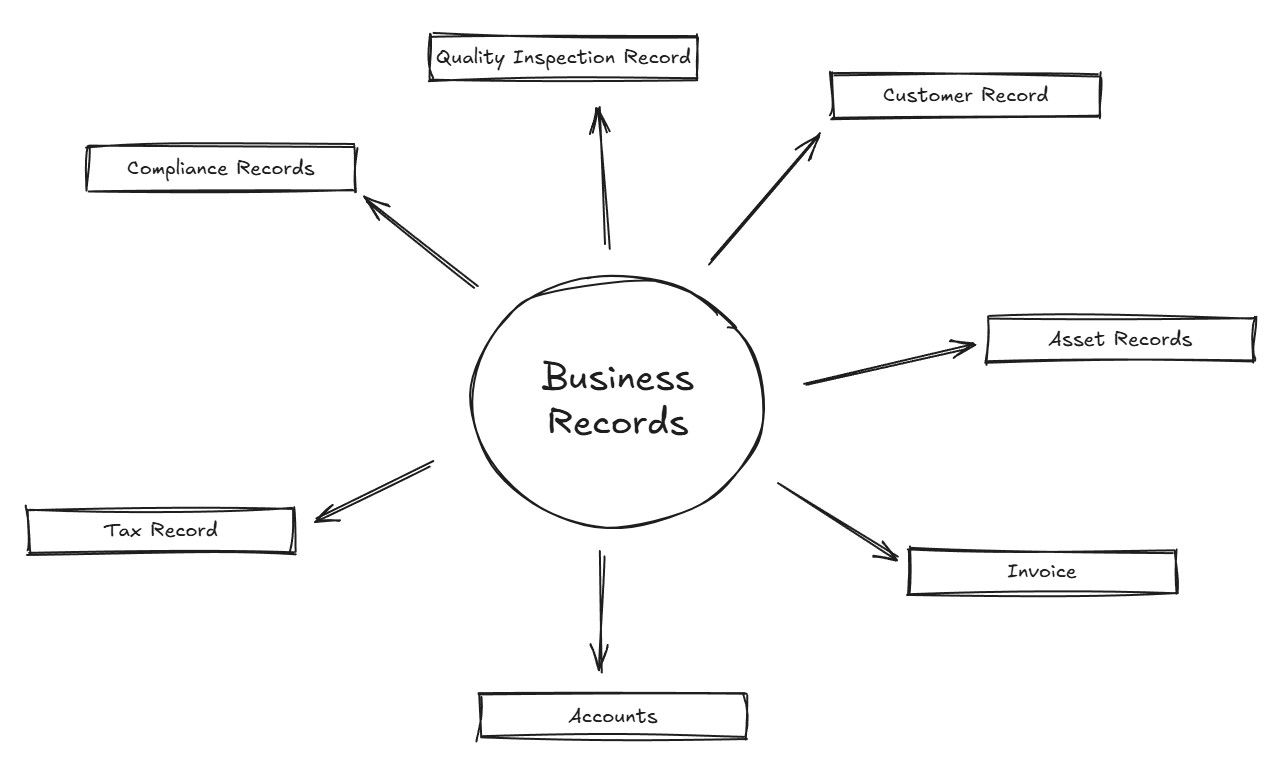
A business record is typically made up of multiple structured data entries that can be linked together to create a complete picture.
Example: Customer Record
A simple customer record may contain:
- Name
- Phone number
- Address
- ID information
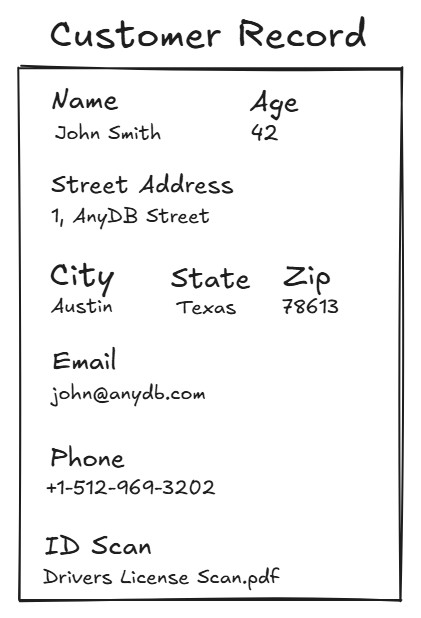
Each entry in a typical business record consists of a field name and corresponding data.
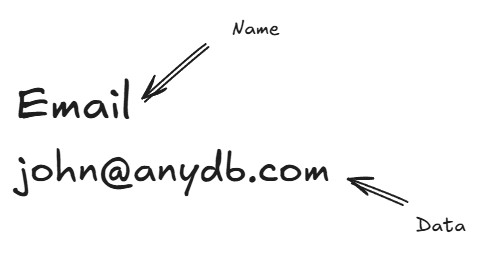
For example, the customer email entry has "email" as the name and the "john @anydb.com" as the data. Most business records are similar in structure, with many many entries to track different data.
Sometimes, business records include linked child records, creating a hierarchical structure. For example, a customer record could link to invoices and orders.

How AnyDB Stores Business Records
In AnyDB, business records are stored as AnyDB items.
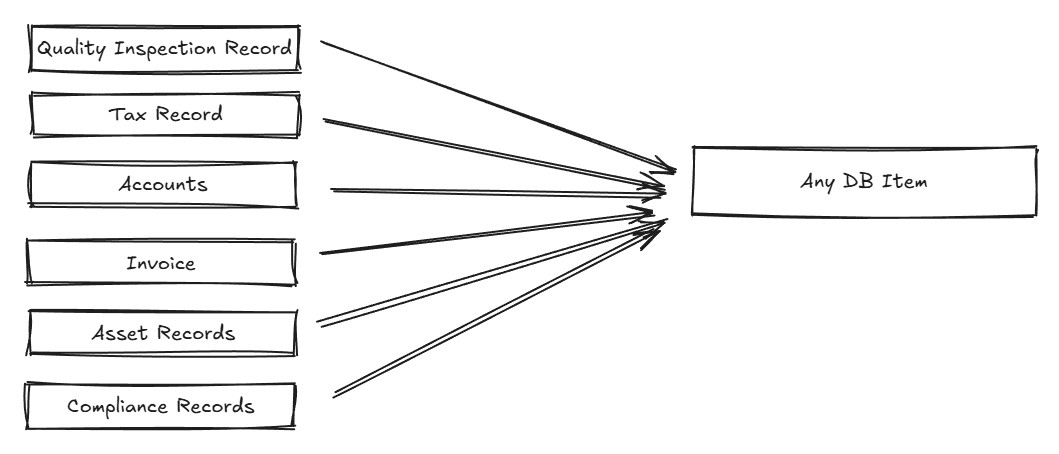
What is an AnyDB Item?
An AnyDB item is a collection of data fields, where each field (or cell) has:
- A name
- Actual data
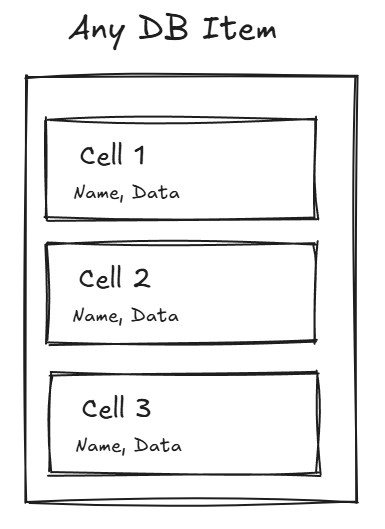
Example: AnyDB Item Representing a Customer Record
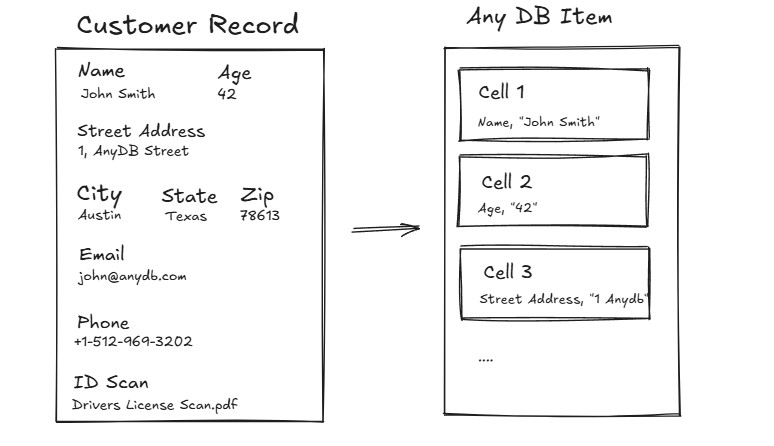
Spreadsheet-like Interface
The most popular grid everyone is familiar with is a spreadsheet and is one of the easiest interfaces to work with any type of data. So each item in AnyDB is structured in a spreadsheet-like grid, making it easy to view and edit.
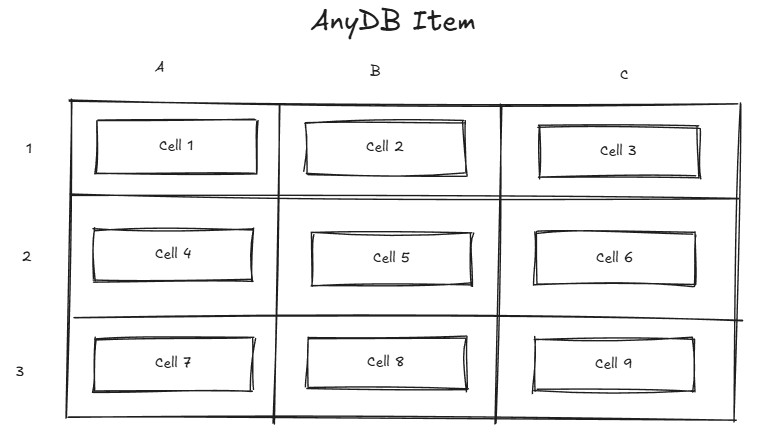
So the same customer record can be represented in a grid that shows a logical layout.
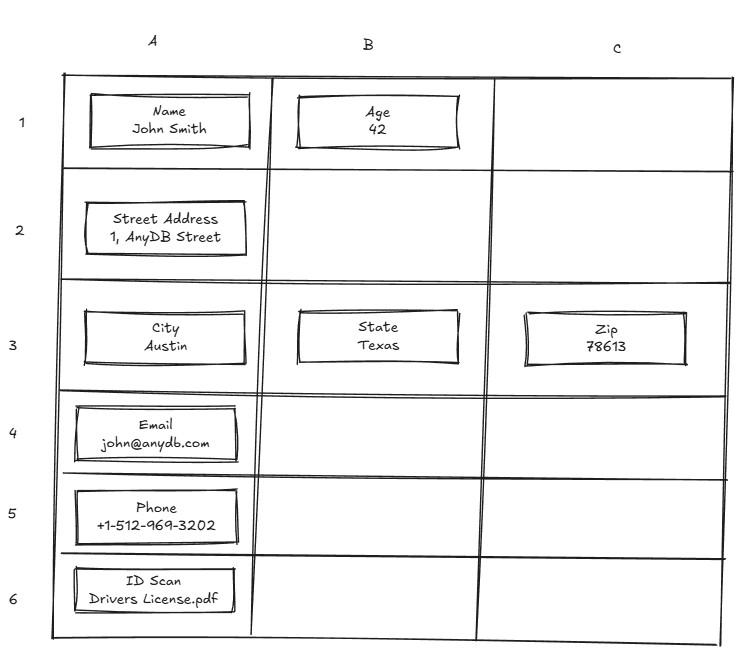
When working with data, the spreadsheet interface allows quick modifications, but read-only views provide a cleaner display.

Note:
A spreadsheet is an electronic document in which data is arranged in the rows and columns of a grid and can be manipulated and used in calculations. The most popular spreadsheets are Microsoft Excel, Apple Numbers, Google Sheets.
Note:
While AnyDB’s interface is similar to a spreadsheet (e.g., Excel, Google Sheets), it is not a full-fledged spreadsheet tool. It focuses on structured data storage rather than complex calculations, pivot tables, or scripting.
AnyDB Cells & Grid Positioning
What is an AnyDB Cell?
An AnyDB cell is a single unit of data within an item.
Each cell has:
- A name (e.g., "Email", "Phone", "Order Date")
- Data (e.g., "john@anydb.com", "555-1234", "2024-01-15")
- A position in the grid (e.g., B2)
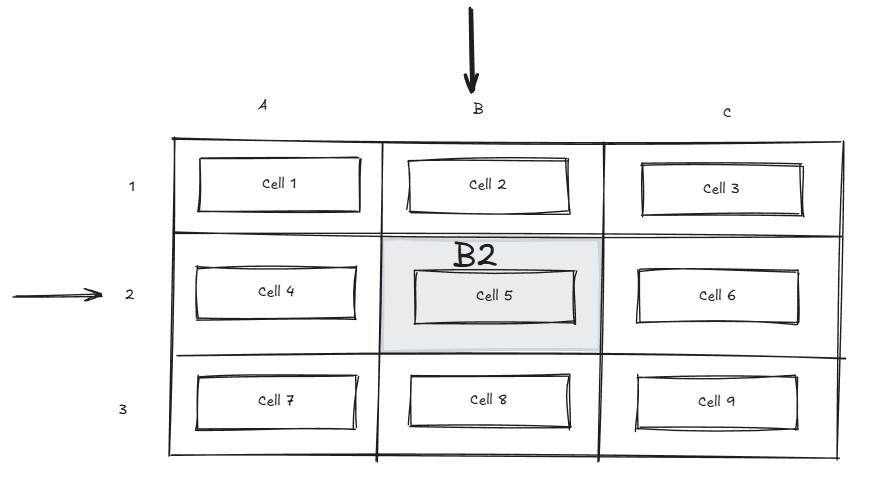
How AnyDB Cells Differ from Spreadsheet Cells
| Feature | AnyDB Cell | Spreadsheet Cell |
|---|---|---|
| Named Fields | ✅ Yes | ❌ No |
| Data Types | ✅ Text, dropdowns, files, images, references, etc. | ✅ Mostly text, numbers, and formulas |
| Relational Data | ✅ Can link to other records | ❌ Typically isolated data |
AnyDB Item Relationships
In real-world business operations, data is rarely isolated. AnyDB allows items to be linked in a parent-child structure.

For example, an Invoice record might contain:
- A Customer (parent)
- Line items (child records for each product sold)
Flexible Data Relationships:
An AnyDB item can be attached to multiple parent items, making it possible to track complex business processes.
AnyDB Templates
What are Templates?
An AnyDB template is a predefined item structure that allows users to create new records with consistent formatting. Instead of manually building new records from scratch, users can leverage templates to save time and enforce standardization.
Here's an example template for a customer.
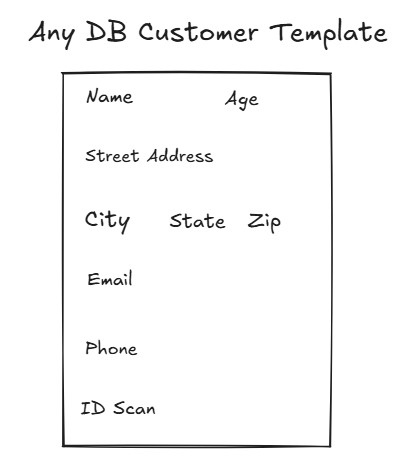
Using Templates
To create a new item from a template, simply choose the template when creating a new item. This will create a new item pre-filled with structured fields, requiring only data entry.
Now it is possible to create a number of items that are standardized and from the same template. For example, we can create a number of customer records from a customer template.
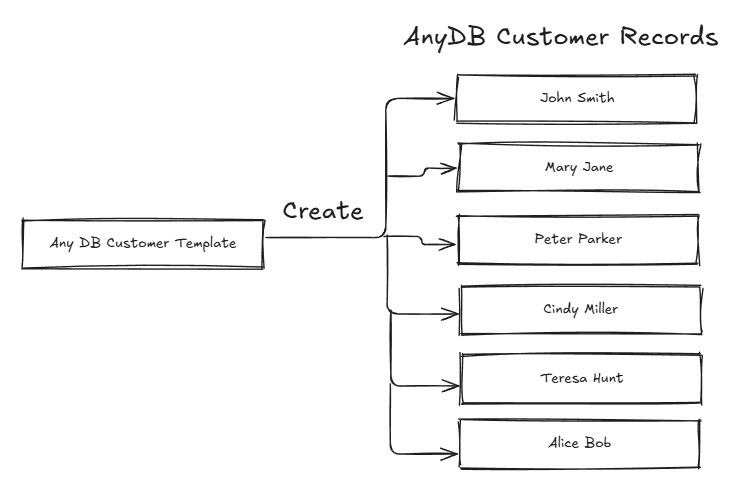
Custom Templates
Need a specialized format for your business? AnyDB allows users to design and save custom templates, ensuring consistency across all records.
Built-in Templates
To help businesses get started, AnyDB includes pre-built templates for common business use cases. These templates can be used as-is or customized further.